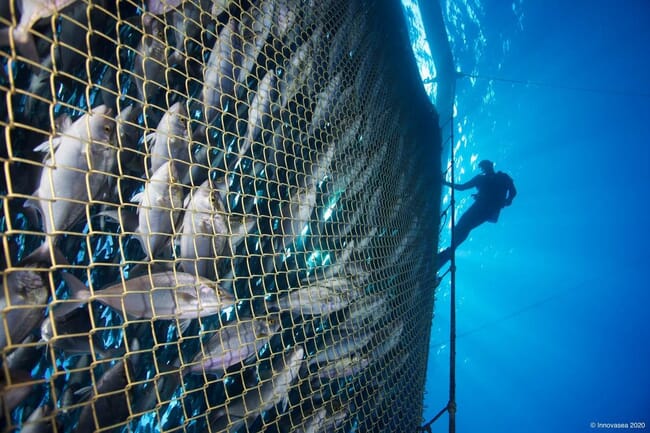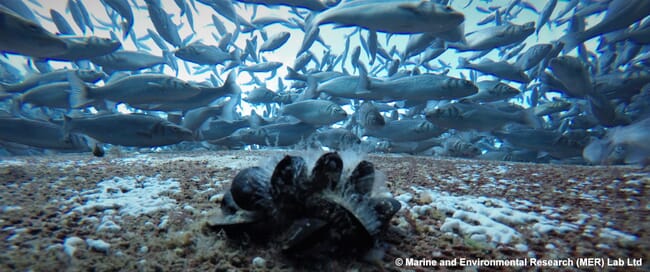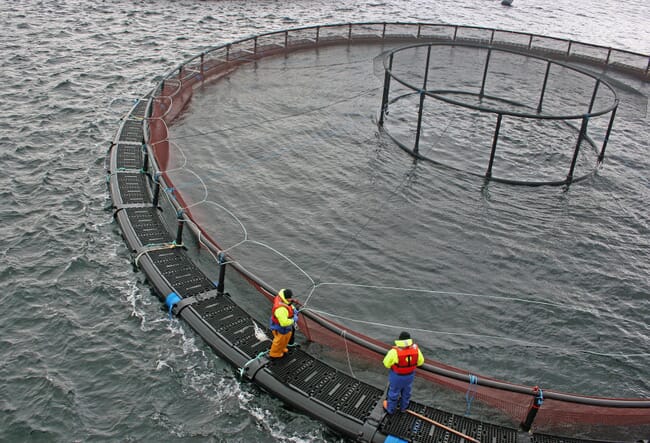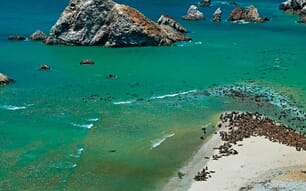Published in the Marine Policy journal, its authors argue that offshore aquaculture growth depends on whether aquaculture stakeholders and policymakers can balance growth goals alongside social and ecological trade-offs.

The Executive Order
On 7 May 2020, the Trump administration issued the Executive Order (EO) on Promoting American Seafood Competitiveness and Economic Growth. The order’s stated aim was to increase US seafood production and expand offshore aquaculture opportunities beyond existing outputs. It created the Seafood Trade Task Force to revise trade policy and potential competitive barriers. It also moved federal oversight of US aquaculture from the Department of Agriculture (USDA) to the National Oceanic and Atmospheric Administration (NOAA).
The EO gave NOAA and state and local agencies the power to reassess the management practices of commercial fisheries. It also gave NOAA the authority to create uniform aquaculture standards, update aquatic animal health regulations and revamp the aquaculture permitting process. As part of its goal to expand offshore aquaculture, NOAA will identify four offshore areas for finfish, seaweed or integrated aquaculture production by 2025.
Aquaculture has huge growth potential in the US – it currently accounts for only 8 percent of domestic seafood production. Proponents of the EO say that the deregulation will make the US aquaculture industry more competitive and seize offshore production opportunities. However, the EO came at a challenging time for the US seafood sector. Unresolved trade wars and the Covid-19 pandemic meant that the industry was restructuring. Imagining the upshots of a new EO is difficult. There is a chance that, if aquaculture expands without proper oversight, it could undermine environmental gains and lose public support.
A look back at 2020
“Turbulent” might be the best way to characterise 2020 for the US seafood sector. An on-going trade war with China meant that the US was cut off from the world’s largest seafood consumer. The start of the Covid-19 pandemic in March of that year was another body blow for the sector. The lockdowns and closure of the food service sector caused huge economic losses. The researchers estimate that 75 percent of seafood consumption in the US takes place in restaurants – fish and shellfish farmers had to quickly adapt their business models to stay in the black.
For many finfish producers, this meant shifting from restaurant to retail sales while shellfish farmers either downsized or delayed selling their crops until the pandemic reached a low ebb. Though the federal government provided pandemic relief with the $1.8 trillion CARES Act, only 0.017 percent of the aid money went to aquaculture producers.
How to safeguard sustainable and successful aquaculture in the US
The researchers highlighted five ways to ensure the EO balances the social and ecological trade-offs of the deregulated industry.
Reforming domestic fisheries
The EO calls for fisheries to increase catch levels while maintaining sustainability targets – this is easier said than done. Currently, 85 percent of wild-caught fisheries are fished at, or near, maximum sustainable levels. Deregulation needs to be strategic and specific to achieve both goals. From the researchers’ perspective, changes in regulation might make fisheries more profitable, but increasing wild production may not be feasible.
Using an ecosystem-based approach to manage aquaculture and fisheries
Before the EO, fisheries and aquaculture activities were managed by two separate agencies, NOAA and USDA. Putting both sectors within the remit of NOAA gives the agency the opportunity to adopt an integrated management approach, specifically an ecosystem approach to aquaculture (EAA).

This model prioritises ecosystem health, community well-being, profitability and overall environmental health when developing aquaculture projects. Managing aquaculture this way is crucial: well-managed and spatially planned fish farms can reduce environmental impacts. Ill-executed developments will degrade the surrounding ecosystem.
Improving public perceptions of aquaculture
Public pushback against new aquaculture projects has been a hallmark of the industry for years. Despite high consumption of imported farmed seafood in the US, many communities remain resistant to local fish and shellfish farms. Industry-led efforts to improve aquaculture’s public image haven’t been hugely successful either.
For the EO to achieve its goals, aquaculture development must include local stakeholders in decision-making. The researchers urged the industry to think of the social “carrying capacity” of communities to minimise objections to new developments. In their view, NOAA is well-equipped to manage these interests when selecting potential sites.
Generating comprehensive aquaculture data
The EO’s clause concerning “suitable reporting” from aquaculture operators is a welcome one. Aquaculture rules vary between states and there aren’t any uniform production standards at the federal level. Federal reporting occurs in five-year census increments – there’s a gap in the national aquaculture data.

Creating a reporting mechanism that tracks annual production and on-farm metrics like feed sources, efficiencies, survival rates and environmental indicators would help aquaculture establish a baseline and build towards future success. The researchers believe that strong data collection will build public confidence and allow secondary industries (like processing and insurance) to thrive.
Balancing food nationalism in a global seafood industry
One unanticipated consequence of the Covid-19 pandemic has been an increase in “food nationalism” and a renewed focus on the US seafood deficit. This growing concern could be a stumbling block for the EO and the Seafood Trade Task Force.
The Task Force needs to maintain the support of sustainable aquaculture producers while gaining access to lucrative foreign markets. The aquaculture market is global – protectionism tends to punish consumers and frustrate growth. Despite its status as the top seafood importer, the US is also among the top five seafood exporters. Identifying opportunities in foreign markets drives the industry’s expansion and will make the US food system more resilient going forward.




